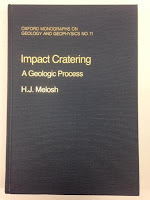Measures for the Shapes of Impact Craters
How to Quantify the Shape of an Area In a previous post, I mentioned that Fred Calef and colleagues (2009) identified several quantitative measures helpful in distinguishing secondary impact craters from primaries on the surface of Mars. Two of the useful measures that should also be useful for evaluating craters on Ceres are the Form Ratio and the Circularity Ratio. Described by Keith Selkirk (1982) as measures for quantitatively representing the shape of geographic areas on Earth, such as drainage basins, they are also useful for determining the "compactness" of geomorphological features elsewhere in the Solar System. Circularity Ratio Circularity is a ratio of a region's area to its perimeter. Selkirk observes that a longer perimeter relative to a shape's area results in a more convoluted shape. A shorter perimeter relative to the area is more compact, with the ideal compactness occurring with a circle. Here is the basic formula: circularity_rat...

